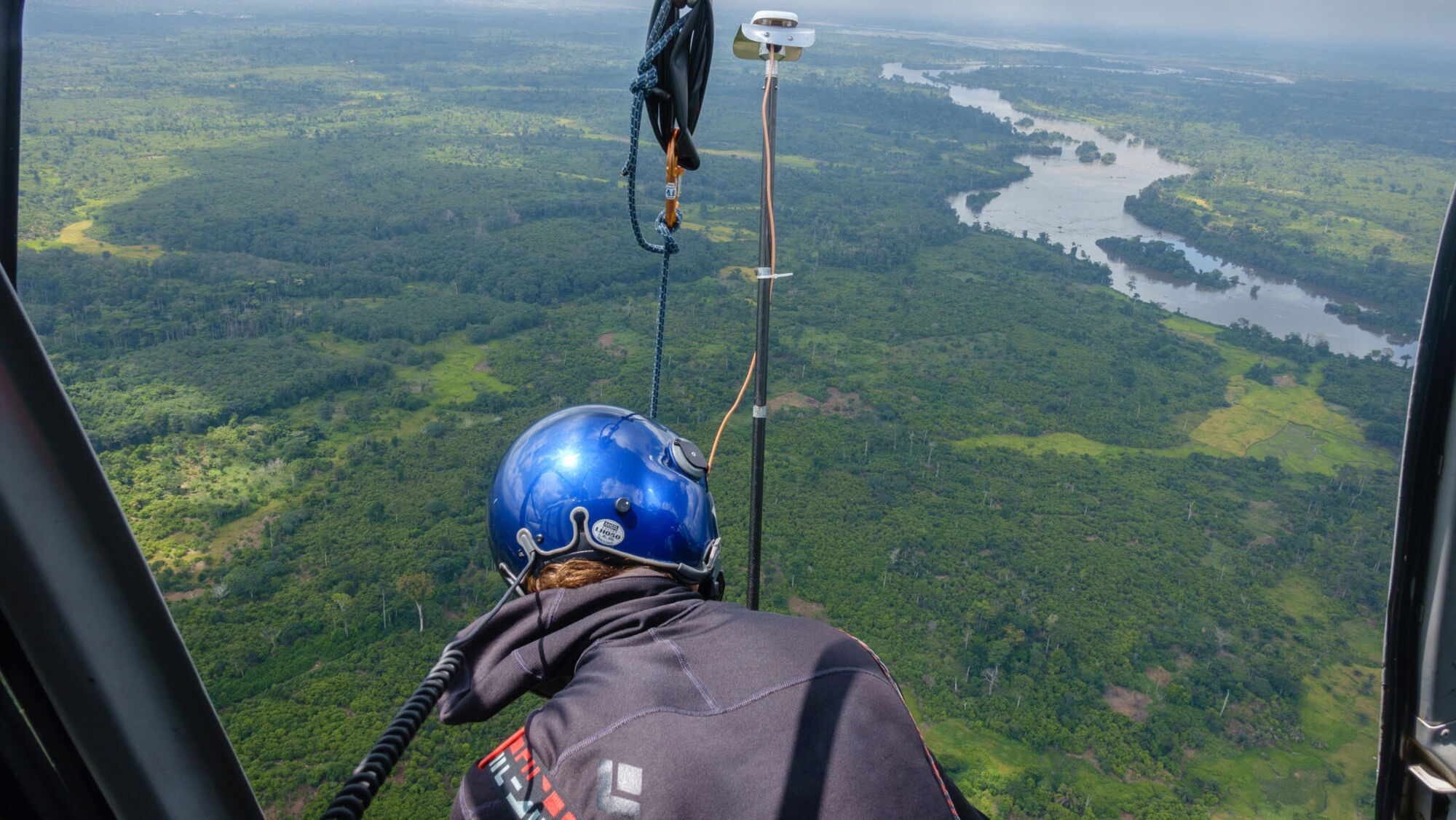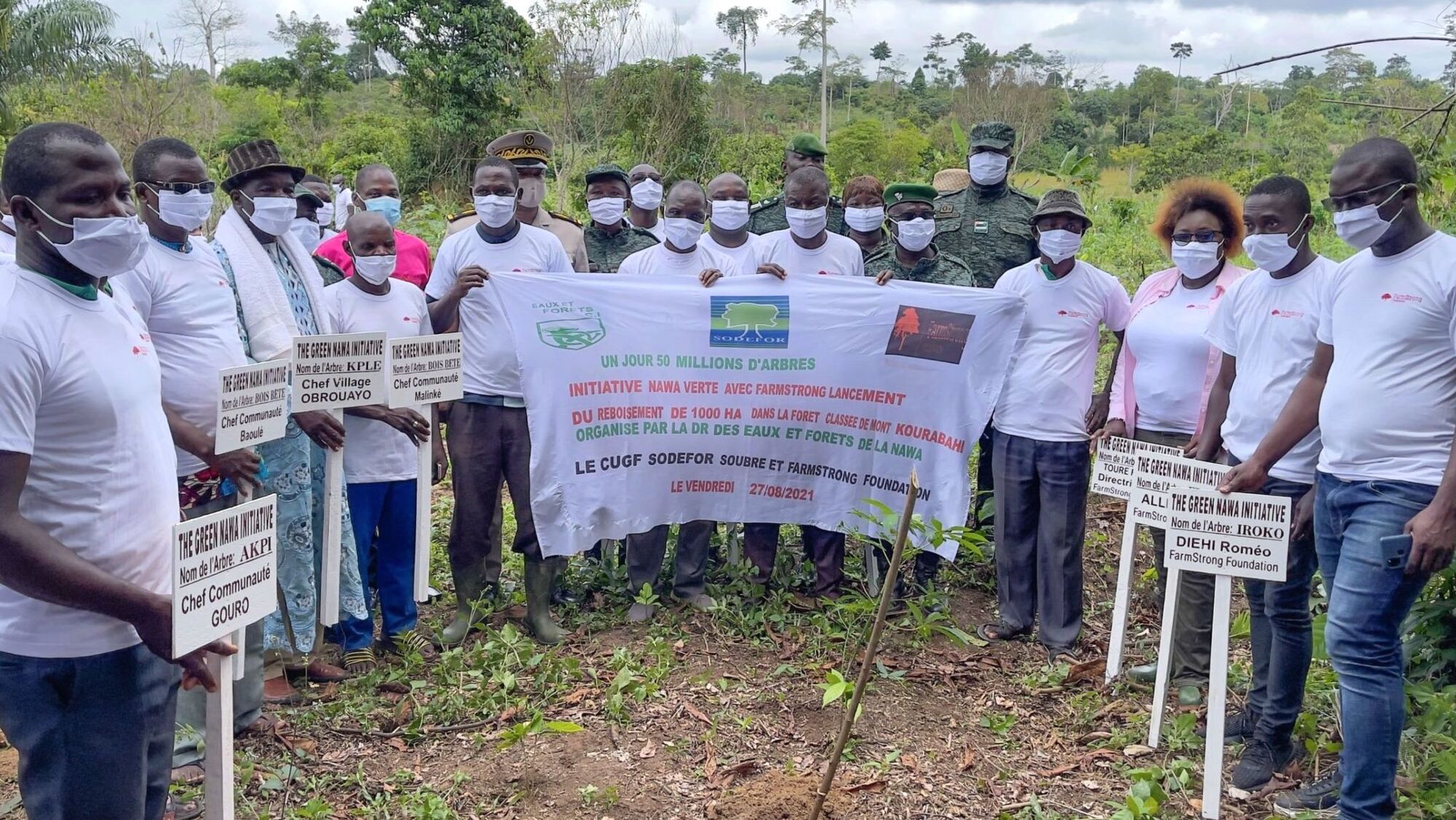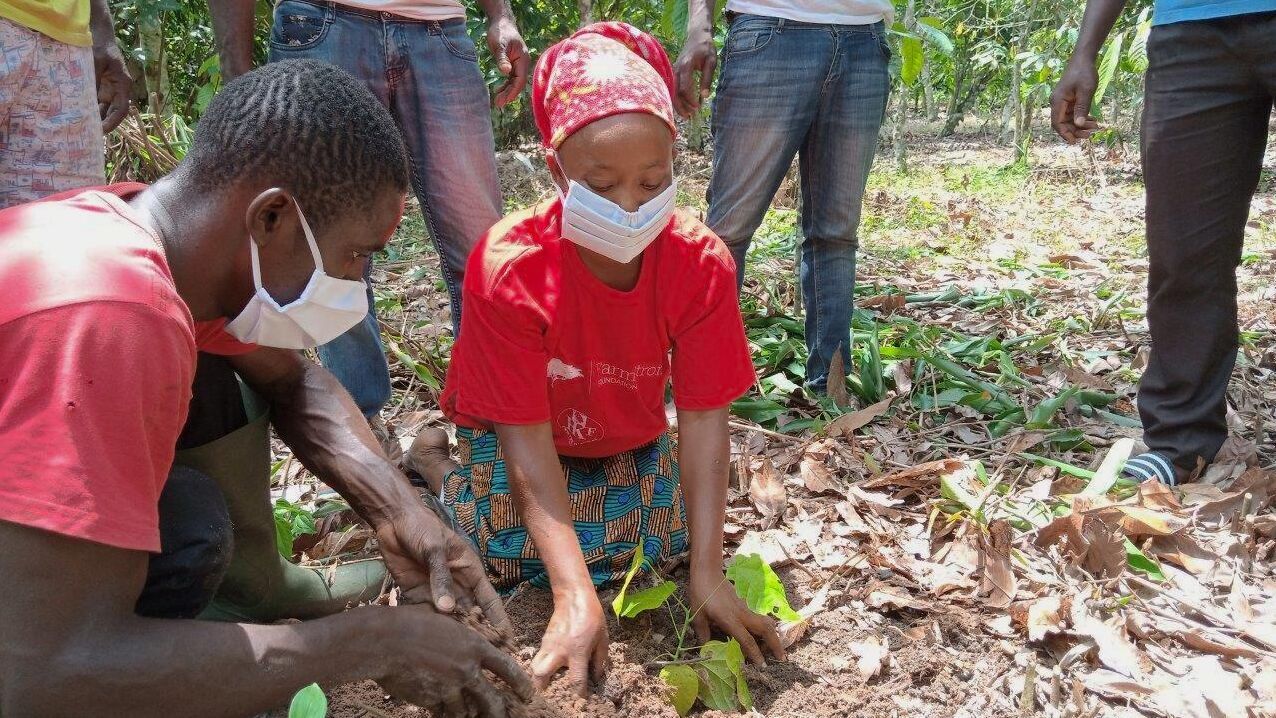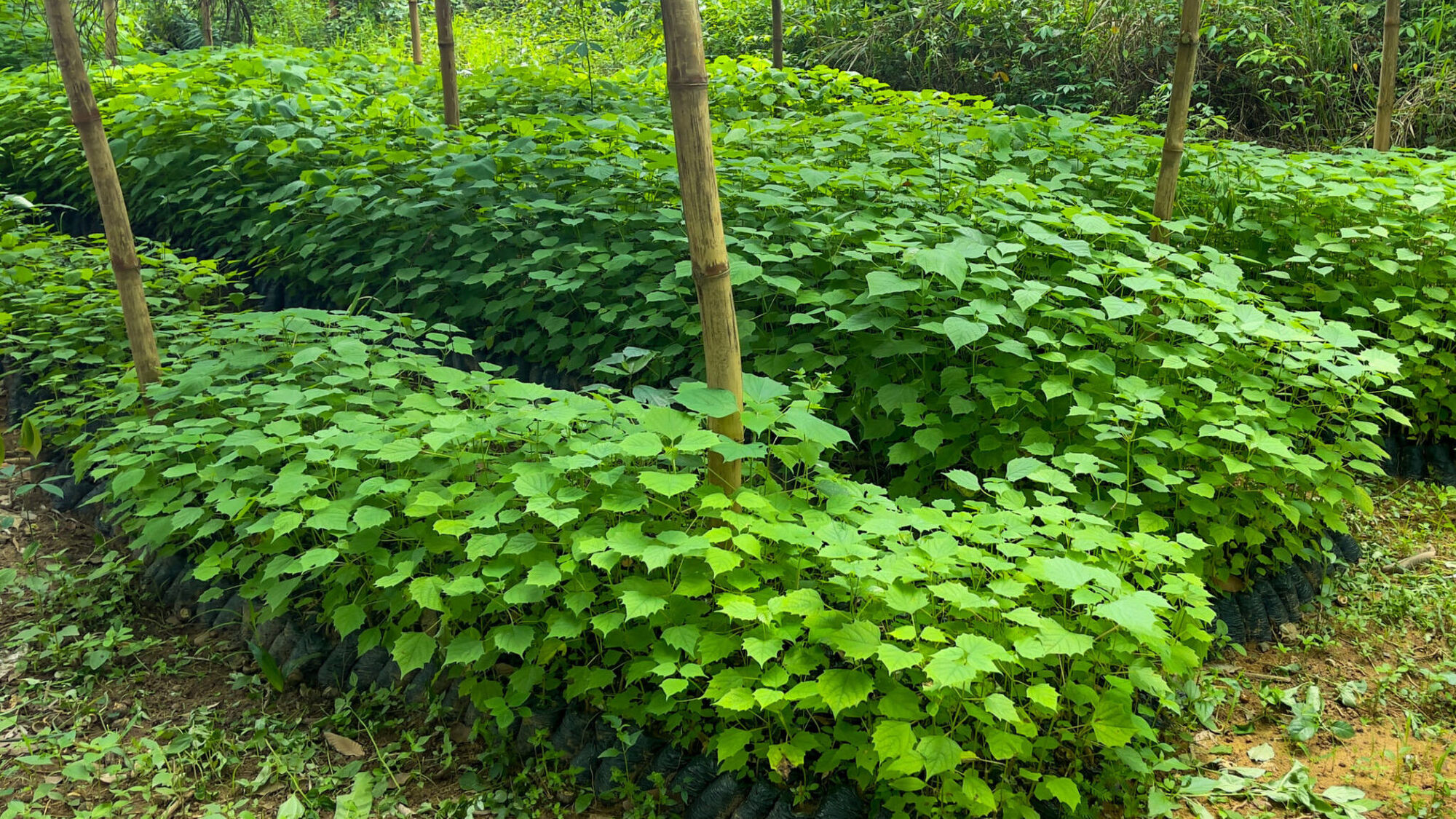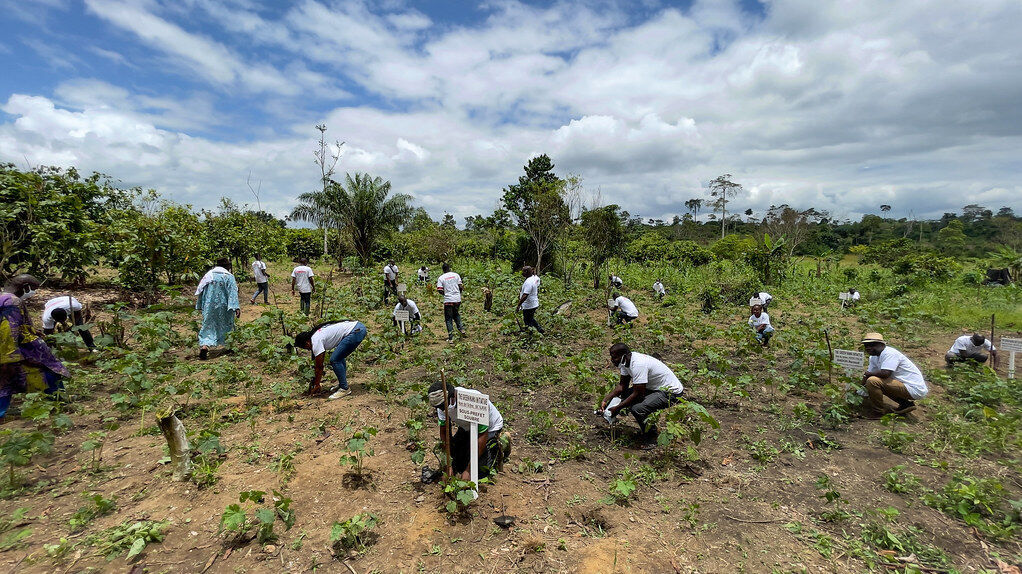The Green Nawa Initiative
What was the main objective of the project?
The project’s core objective is to introduce integrated sustainable farming systems within a regional landscape model in the Nawa region over a three-year period. With a traceable sourcing system, it employed innovative solutions, including technology like LiDAR calibrated satellite image assessment, mobile financial transfers, GPS addressing, and wireless sensors. This aims to benefit cocoa farming families and their ecosystem through synergies.
Notably, the project prioritises empowering women and youth in adopting social and environmental practices. Leveraging local insights, it is designed to be scaled up. The project is backed by local and regional authorities as well as multilateral agencies. Implementation involved a dedicated team of locals. They were supported by stakeholders, ensuring a successful and replicable outcome.
How has the project contributed to sustainable cocoa production?
FarmStrong's programs prioritise the establishment of a sustainable ecosystem from a regional standpoint. When this principle is upheld, and the ecosystem within which operations are conducted is based on sustainable practices, the sustainability of not only cocoa production but also other (food) crops grown under the same umbrella, is ensured.
It is crucial not to overly focus on a single supply chain, but rather adopt a broader landscape approach with multiple value chains. This approach encompasses, amongst others, the understanding of the constraints that impede rural socio-economic development.
Simultaneously, it involves constructing a program that integrates environmental stewardship, climate change risk awareness and a protective social framework, supporting the entire regional agricultural production system. This systemic approach on a regional scale considers not only cocoa but also food, health, nutrition, and every aspect that contributes to a holistic perspective.
What steps were taken during the project?
Before starting the project, we initiated cooperation with both government representatives and traditional leaders. Local and regional entities were embedded, as well as national institutions such as Ministère des Eaux et Forêts (MINEF) and the Société de Développement des Forêts (SODEFOR).
This was to establish a shared understanding of the local context. It also identified areas for intervention. Upon starting the project, various activities were implemented across distinct areas, spanning from cocoa traceability and the implementation of village savings and loans associations (VSLA) to agroforestry system development in the region. Additionally, we started with the restoration of the badly degraded “foret classée” of Mont Kourabahi. Throughout these initiatives, we actively engaged local communities, including youth and women.
How unforeseen challenges were overcome and what lessons were learned from them
Upon initiating the payment procedures, we quickly encountered the reality that not all participants in our programs have access to bank accounts or mobile financing. Many farmers in Côte d'Ivoire don’t have government-recognised photo identification documents. While we have helped many of the farmers obtain mobile bank accounts, there remains significant work to ensure all farmers can access this system. To meet this challenge, we have introduced a pilot with direct debit cards and normal bank accounts.
An alternative to the formal banking system are the Village Savings and Loans Associations (VSLA). These associations enable individuals and groups in local communities, who don’t have access to financing or savings accounts, to benefit from VSLAs, which allows members to save and borrow money for income-generating projects. These alternative systems to the official financial structures are crucial for local community development, as limited access to "official" funding hinders local economies and impedes progress in these remote areas of Côte d'Ivoire.
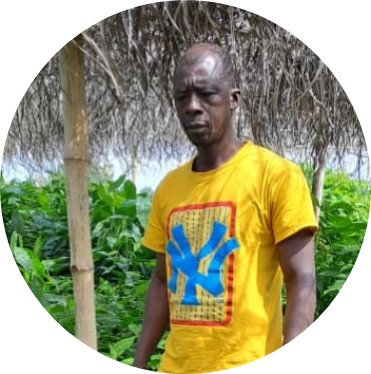
“I was recruited as a lead cocoa farmer when I received various trainings that have provided me with the necessary expertise. I was fortunate to later manage a tree nursery with three young individuals assisting me in the nursery. These two activities have granted me an income to support my wife and our four children. I enjoy it and I'm learning a lot.”
Interview with Michiel Hendriksz from FarmStrong Foundation about the project
Michiel Hendriksz, what is innovative about this project?
The project is innovative in four dimensions: first, it is aimed at the entire population of these rural communities, not necessarily specific members of a cooperative within communities but the community as a whole. It gives us a much higher membership density compared to the cooperation with cooperatives.
Second, we use several high-tech earth observation (EO) technologies. We detect forest disturbances, degradation and deforestation. Moreover, we are piloting EO use in child labour risk assessment.
Third, the way we do the situation analysis (not just a need assessment) in those villages is not necessarily supply chain-related. So, we look what are the issues these people are really facing (social, health, nutrition, economic, financial, and agriculture). Agronomy is seldom the most important bottle-neck. Based on the situation analysis we set up the program to deal with these bottle-neck constraints in a sequence which creates a fast and efficient positive impact on the issues faced by the population.
Fourth, we use the revenues of CO2 sequestration in non-agricultural biomass. These revenues are used to pay the farmers a substantial additional income. They can also be used to invest in community infrastructure (birth certificates, land certificates, health.).
What has FarmStrong learned through the project?
The key to succeeding in these highly complex ecosystems is to ensure that everyone is on board. It's crucial that everyone understands what, why and how we are doing it, and how long it will take to accomplish it.
This means that both the private sector (whether international or local), the public sector and multilateral organizations, including non-formal government systems such as traditional village chiefs and their village committees are of utmost importance. They will play a pivotal role in motivating the population to join our efforts.
Moving up the hierarchy, the "sous-prefet” is also crucial to engage, as they represent the first level of formal governance in these countries. Beyond that, the prefecture is essential. A bottom-up approach is vital for the success of these programs, including engagement with key non-official governance structures.
How was farmer engagement and ownership promoted throughout the project period?
Farmers will only commit and become positively involved in these programmes if they understand the benefits for themselves, their families and their communities. They will not adopt imposed measures that are not in their interests. The lowest take-up rates are directly linked to the fact that farmers are not involved in setting up the structure and that they are dealing with perceived problems (through Western eyes) but not with their real problems.
One needs to uproot the root causes of these issues, the drivers of the problems, not just look at the symptoms of the consequences. If you understand the real issues and come up with real solutions for the farmers, families, and communities, they will be fully engaged.
How is it ensured that the project has long-term effects?
Programs in these ecosystems take a lot of time to develop and to get started, as we have to understand first what the real issues are. You continue working with the families and the communities to move in a direction which will have a visible and noticeable positive impact on the communities themselves.
Organisations involved


